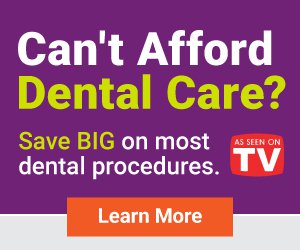How to Improve Your Teeth on a Limited Budget

If you’re like most people, you probably already know the basics of healthy oral hygiene. Still, when you look in the mirror and smile, you notice imperfections that you wish you could fix.
The problem? Dentist visits–and their solutions–are expensive. As much as you want to improve your teeth, there are always other things in the budget to focus on, and your oral health tends to take a backseat to other bills, expenses and responsibilities.
But what if we told you that fixing your teeth and improving your oral health doesn’t always have to mean spending a ton of money?
The truth is, you can start taking steps today toward improving your teeth–even if you’re on a limited budget or don’t have a ton of cash to allocate toward dental work.
In this blog, we’re sharing practical, easy and affordable tips for fixing your teeth (with no big budgets required) and elevating your oral hygiene routine.
While these tips can’t fix a crooked bite or help you fill your cavities (because, let’s be honest, dentists exist for good reason), they can help you improve your teeth and create better habits for oral hygiene. And to us, that’s something to smile about.
KEY TAKEAWAYS:
● Prioritize Oral Health: This guide offers budget-friendly strategies to enhance dental hygiene.
● Hydration vs. Sugary Drinks: Choose water over sugary beverages to protect enamel.
● Consistent Brushing Routine: Brushing twice daily with fluoride toothpaste prevents plaque buildup.
● Consider Electric Toothbrushes: They offer thorough cleaning at affordable prices.
● Utilize Dental Discount Plans: Save on dental expenses with discount plans.
● Commit to Daily Flossing: Flossing daily prevents tartar buildup.
● Regular Dental Visits: Consistent check-ups detect issues early, avoiding costly treatments.
● Choose Effective Mouthwash: Use mouthwash targeting plaque reduction and fluoride rinsing.
● Reduce Tobacco and Alcohol: Limit consumption to preserve enamel and reduce risks.
● Adopt a Tooth-Friendly Diet: Nutrient-rich foods strengthen teeth and improve oral health.
● Explore Dental School Clinics: Some offer discounted treatments supervised by experts.
● Budget for Dental Expenses: Set aside funds for routine visits to avoid financial surprises.
● Activate Discount Plans: Save on dental services with discount plans like Carefree Dental
● Disclaimer: Professional dental visits are crucial alongside these tips and advice.
How to Improve Your Dental Health on a Limited Budget
If you’re someone who’s constantly wondering “how can I fix my teeth without spending a ton of money?” this blog was written for you.
Still, these tips can be helpful steps toward a low-budget approach to improving your teeth and dental hygiene.
Practical Tips for Improving Your Teeth on a Budget
Drink More Water (& Sub Out Sugary Drinks)
Did you know that fizzy beverages that are high in carbonation and sugar are directly affecting your teeth? Sugar and carbonation both eat away at the protective enamel on your teeth, making them more vulnerable to oral bacteria and tooth decay.
How does this happen? The sugar and fizz in soda teams up with the bacteria that exists in your mouth to form acid that attacks your teeth. Every sip means a new battle on your teeth, and ongoing attacks will continually weaken your teeth over time, making them susceptible to decay, cavities and more issues.
The best way to avoid this damage to your teeth? Say no to sugary drinks, sodas and any type of carbonation that could lend a hand in deterioration. It’s not practical to tell you never to touch these beverages again, but limiting them and subbing them out for water can be an easy, affordable way to improve your teeth starting now.
Plus, if you have access to city or community water that has fluoride in it, this can help you reduce the risk of cavities, too.
Don’t Skip the Two-a-Days (Brush Twice)
We’re all told our whole lives to brush our teeth in the morning and at night, so this might seems like repetitive advice. Truthfully, though, the best thing you can do for your teeth is to stick a tried-and-true brushing routine.
Experts recommend brushing twice daily with a fluoride toothpaste for at least two minutes per every session.
Why? Because forgoing your routine, even every now and then, can leave your teeth vulnerable to hardened plaque. That hardened plaque turns into tartar, which makes it even harder to keep your teeth clean and healthy.
When tartar builds up on your gums and your teeth, that’s when inflammation and decay start to happen. Want a bonus guarantee that you’re getting a good, solid clean every time you use your toothbrush?
Opt for an electric toothbrush for a thorough cleaning you can count on. There are plenty of brands out there with affordable options, but if you have your eye on an electric toothbrush that doesn’t break the bank, try waiting for sales and coupons before you purchase.
Dental Discount Plans to Limit Dental Spending
One of the best ways to save? Investing in a discount savings plan that helps you when it comes time to pay the dentist–especially if you don’t have dental insurance or you need help filling the gaps in your dental insurance.
It’s no secret that dental visits have the potential to be expensive–but that doesn’t mean you can skip out on getting your teeth cleaned and having your annual checkups. With dental discount savings plans like Carefree Dental, you can save on dental treatments.
At Carefree Dental, you can pay a low monthly fee to join our membership–then, when you get your treatment at a participating provider, you qualify for a discount that could be anywhere from 15-50%* of your treatment (per visit in most instances).
With this kind of support, you can likely get your teeth fixed without breaking the bank. Other kinds of financial assistance options for dental work are available, too, like dentistry grants, dental schools and even free dentist care like Donated Dental Services (DDS).
Prioritize Daily Flossing
It’s not just a thing dentists tell you to do–flossing is one of the most important parts of a top-notch healthy tooth routine. Flossing daily helps you fight plaque accumulation that leads to damaging tartar.
Flossing cleans between the teeth where your toothbrush can’t reach–that’s where the real damage is done. By making a no-exceptions rule for flossing, you can take a low-to-no-cost approach that makes a real difference in the appearance and overall health of your teeth.
Stick to Regular Visits to Avoid Bigger Costs
Even though this requires going to the dentist and spending money to do so, you’re better off sticking to regular visits than putting the dentist off for years only to be greeted by a giant bill for a slew of dental issues that need fixing.
The surefire way to be met with shocking costs at the dentist is to avoid your appointments for years to get around paying for dental care. If you can budget for your bi-annual visit to ensure everything is in the clear, you can improve your tooth health and monitor issues before they become big, costly problems.
Make Mouthwash a Must
Mouthwash has long been advertised as a way to reduce bad breath, reduce the risk of gingivitis and help stave off cavities.
But does it actually improve your teeth? The answer is simple: the benefits are many if you’re using the right kind of mouthwash.
When you opt for a mouthwash that focuses on reducing plaque accumulation and fluoride rinsing, it can help you fight gum disease, refresh your breath and even reduce the risk of cavities.
Limit (or Eliminate) Smoking and Drinking Alcohol
There’s just no arguing it–smoking and drinking alcohol aren’t great for optimal dental health. Plus, they can really wear down your teeth, potentially increasing your financial burden. One of the worst things you can do to your teeth (and lungs) is use tobacco or drink too much alcohol.
Firstly, tobacco can turn your teeth yellow, darkening the enamel and creating a less-than-pearly-white set of chompers. But more seriously, it can corrode your gums and the enamel on your teeth, leading to a risk of oral cancer, tooth decay and even cause your teeth to fall out.
Alcohol also can get in the way of optimal oral hygiene and how your teeth look. Typically people who consume a lot of alcoholic products are prone to higher plaque levels, stained enamel (thanks to liquor, dark-colored mixers, wine and more) dry mouth, tooth grinding and even tooth loss.
Give Your Diet a Tooth-Friendly Audit
Did you know that what you eat actually impacts your dental health? When the experts say, “You are what you eat,” they mean it in more ways than one. We’ve already talked about how sugar and carbonation can negatively impact your teeth, but did you know that other foods high in acidity can also contribute to tooth decay?
If you’re looking to take simple, affordable steps to improve your teeth, start with swapping things out in your diet. Instead of sugary, acidic foods, opt for leafy greens, apples, carrots, cheese, strawberries and yogurt.
A good rule of thumb? Anything rich in essential nutrients like calcium, vitamin C and phosphorus can help strengthen your teeth, improve your gum health and reduce your risk of dental problems. Want to make sure you’re getting enough vitamins and nutrients? Try adding these into your diet with doctor-approved supplements.
Check with Your Local Dental School
Did you know that some dental schools offer discounted treatments, cleanings and care to patients? Most dental schools require that students gain practical experience before they graduate.
To make this milestone more seamless for their students, they often have in-school clinics where these students can gain experience and provide low-cost dental care.
These dental schools have strict regulations and defined procedures–and students are always supervised by a licensed expert through each procedure (who can intervene if necessary). This low-cost care allows you to get your teeth fixed at a much lower cost than a dentist’s office.
They’ll get experience; you’ll get exceptional dental care at a fraction of the cost.
Budget for Your Dental Visit
Call ahead and get the details on what a routine cleaning will cost you at your local dentist. Then, schedule your appointment weeks or months in advance so you have ample time to set aside the funds you’ll need for your appointment.
How you tackle this is totally up to you–maybe you cook all your meals at home for the month to save cash on food, perhaps you take a few extra side jobs or maybe you even put a pause on a few subscriptions for a month or two.
Knowing the cost before you go can help you set aside exactly what you need for your bi-annual dental cleanings and check-ups.
Discount Savings Plans for Dental Visits
If you’re ready to take your oral health into your own hands, we highly recommend tackling all the low-cost tips above to get your teeth back on track. When you’re ready to see a dentist, we encourage you to activate your Carefree Dental discount plan immediately to help you save 15-50% at the dentist*.
Find your dentist now in our discount provider network.
*Per visit, in most instances, on services. Actual costs and savings vary by provider, service and geographical area. The Carefree Dental blog is not meant to be a substitute for professional medical advice, diagnosis, or treatment. The text and pictures within the content are intended for information purposes only. Readers should consult with a licensed dentist or healthcare professional before seeking treatment.
The Carefree Dental Card is not insurance and Carefree Dental is not an insurance provider.





